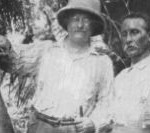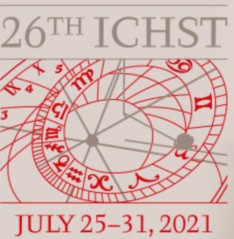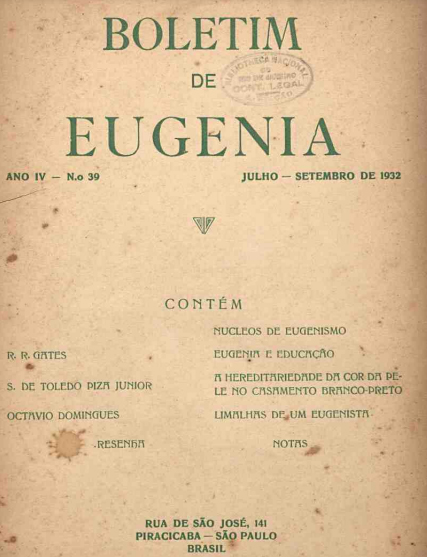July/2013
 The appropriation of religious, cultural, or supernatural phenomena by science throughout the nineteenth century, including trances and spiritual possession, is the topic of the article that opens the latest issue of História, Ciências, Saúde: Manguinhos (HCSM), available on Scielo. The journal features 16 articles, ranging from a discussion on the use of coca leaves by traditional communities to an exploration of relations between today’s technocratic society and technological and biological aspects of the sci-fi book Brave New World, written by Aldous Huxley and published in 1932.
The appropriation of religious, cultural, or supernatural phenomena by science throughout the nineteenth century, including trances and spiritual possession, is the topic of the article that opens the latest issue of História, Ciências, Saúde: Manguinhos (HCSM), available on Scielo. The journal features 16 articles, ranging from a discussion on the use of coca leaves by traditional communities to an exploration of relations between today’s technocratic society and technological and biological aspects of the sci-fi book Brave New World, written by Aldous Huxley and published in 1932.
The first article – “A nosology for supernatural phenomena and the construction of the ‘possessed’ brain in the nineteenth century,” by Valéria Portugal Gonçalves and Francisco Ortega – analyzes research that attempted to pinpoint the location of mental processes within the brain.
The text begins with studies by Franz Anton Mesmer and his disciples, who developed the concept of magnetism; it then moves on to James Braide’s theory of hypnosis and ends with the work of Jean Martin Charcot, which marked the inclusion of hysteria among diseases.
In the article “Scientific approaches to the Mexican mestizo,” the researchers Carlos López-Beltrán and Vivette García Deister analyze the scientific approaches to the mestizo in Mexico from colonial times through today, a path marked by genetic studies. They identify two trajectories that converge in recent science: the ideological, which places the mestizo at the core of Mexican national identity, and the techno-scientific, which transforms the mestizo into a valuable resource in research on human population genetics.
The latest issue also features articles on a variety of other topics, including:
– international initiatives to control epidemics in South America
– tuberculosis mortality in Argentina
– rituals related to death at an eighteenth-century monastery in Rio de Janeiro
– the teaching of medicine at the University of Coimbra in the sixteenth century
– mental health policies in Santa Catarina
– the use of plants by the people of Northern Cameroon
– an analysis of the scholarship on the history of nursing in Brazil
– the philosophical stance of professors vis-à-vis the teaching of scientific concepts
– Silva Coutinho’s contribution to the geological collections of Brazil’s National Museum
The Sources department presents an article on the contribution that the GeneticsMuseum at the Federal University of Rio Grande do Sul (UFRGS) has made to the study of the history of genetics in Brazil and to human population genetics in particular. The text discusses the context of the creation of the institution, which was opened to the public in 2011; it also describes the exhibits that have been held there and includes photographs of the collection. The article is signed by Vanderlei Sebastião de Souza, Rodrigo Ciconet Dornelles, Carlos E. A. Coimbra Júnior, and Ricardo Ventura Santos.
In his note, HCSM science editor Jaime Benchimol introduces readers to the journal’s new virtual spaces: its Facebook page, Twitter profile, and blog, which will soon appear in English as well. “In addition to reinforcing HCSM’s presence in more regions of Brazil and abroad as well, these online tools will foster access to our articles and augment their impact in international indexers,” Benchimol states.
View the table of contents for the latest issue of HSCM on Scielo







